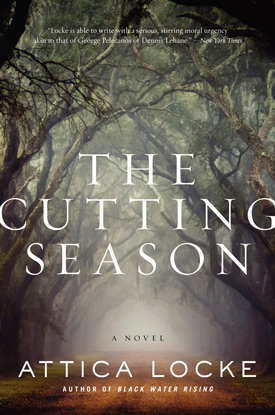Locke's novel tackles the living historical museum aspect of plantations like Oak Alley. While an important topic, this is not what I wish to discuss for this blog post. Instead, as I read the book, I noticed that Locke's novel, in some ways, can be seen as a continuation of Gaines' work. The present day mystery in the novel centers around the death of a migrant farm worker named Inés Avalo. Inés works for the Groveland Corporation, a company that plants and harvests sugar cane on the outskirts of the eighteen acre Belle Vie Plantation. The cane fields used to be owned by the Clancys, but over time the ownership has changed. Even Belle Vie itself, a place that Leland Clancy wanted to keep intact as a historical artifact, is in its last days because Raymond Clancy, Leland's son, plans to sell it to Groveland since sugar is king and will bring in money for the family and the state. While the Clancys and those like Ed Renfrew used to hire African Americans and poor whites from the area to farm the land, the Groveland Corporation relies on migrant workers, "pulling in laborers from out of state, as far west as Beaumont, Texas, and even some coming all the way from Georgia and Alabama; they were Mexicans mostly, and some Guatemalans, plucked out of rice fields and fruit groves for a few months of working Louisiana sugarcane" (18).
 |
| Oak Alley Plantation |
The narrator talks about how many of the African Americans in the community "could trace their people back before the war, when slaves had built the state's sugar industry with their bare hands" (35). Each could tell a story about their distance relatives. Caren's mother, Helen, "loved the whole of this land, and she wanted Caren to love it, too, to know where she came from" (36). While the African Americans have an attachment to the land that runs deep, a resentment occurred between them and the migrant workers because "these new people coming here, making themselves at home" (35). Examined in conjunction with Gaines, the immigrant farm workers play the same role as the Cajuns in Gaines' work. However, there is a difference. Whereas Gaines' prominent African American characters in the community are either preachers or teachers, the ones in Locke's novel have a greater opportunity for social mobility. Eric, the father of Caren's daughter, is a lawyer and works in the Obama administration, and Caren herself attended Tulane Law School. The majority of the community, though, is not like these two. The community in the novel is the workers that maintain the history of the plantation. Looked at in another way, the immigrant workers take on the role of the African Americans in Gaines' works because they are the lowest on the social ladder, with no real ability to climb any higher. No matter how you look at the invisible workers in the cane fields of Groveland, they are there and exist.
What are your thoughts? I just finished the novel, so mine are not fully formed yet. I do think that tracing the links between writers like Gaines and Locke in this way is fruitful and leads us to a better understanding of both writers. Remember to leave your comments below.
Locke, Attica. The Cutting Season: A Novel. New York: Harper Collins, 2012. Print.

No comments:
Post a Comment